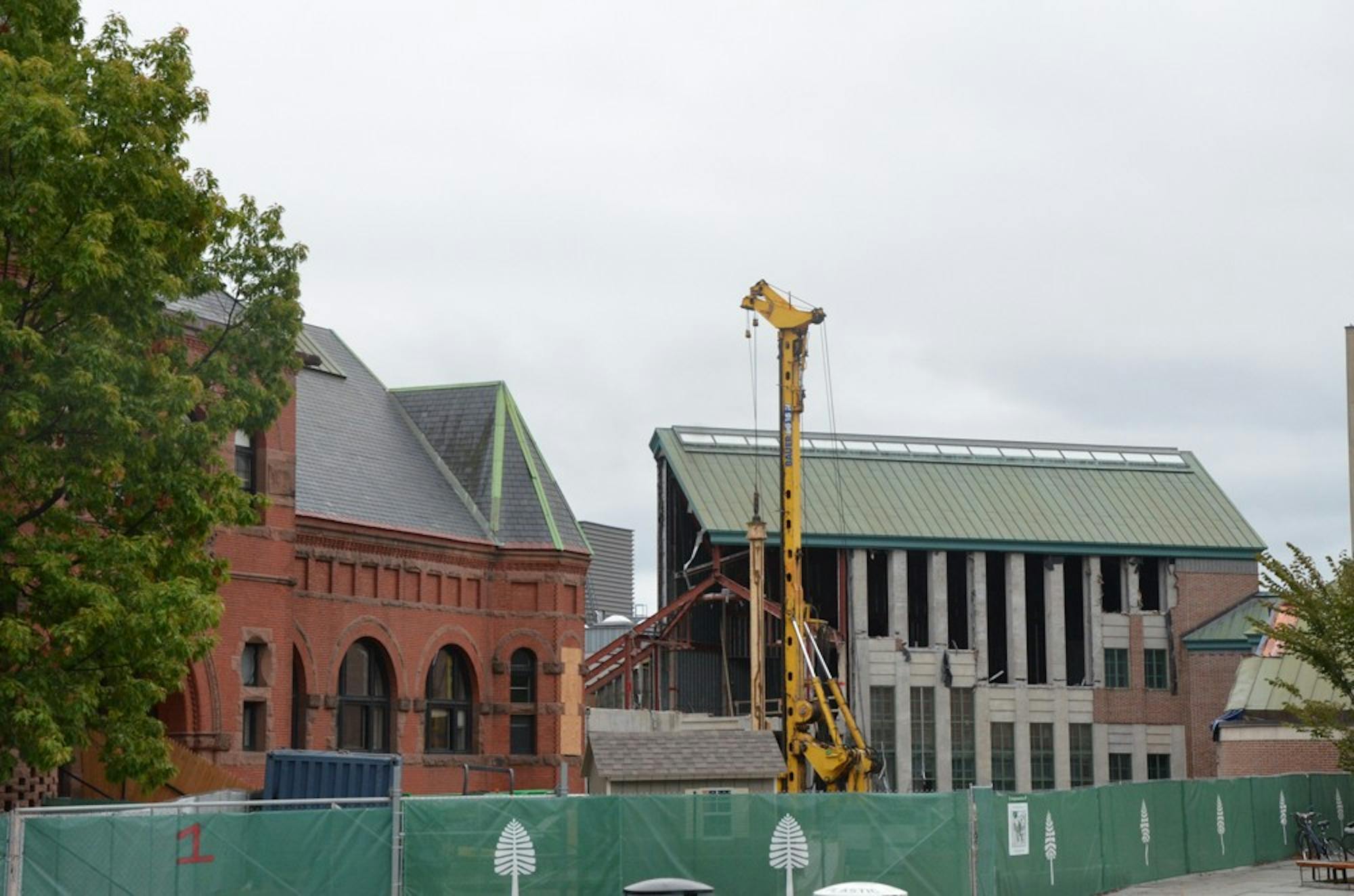Behind the covered, under-construction scenes of the Hood Museum of Art’s renovation, nearly 50 pieces from the museum’s permanent collection are currently on loan to over a dozen museums from coast to coast. “Hood on the Road,” one of many initiatives put into place to keep art at the Hood active during the closure period, has been engaging the public with Dartmouth’s 247-year-old collection.
Museum staff started planning well in advance for the Hood’s closure. The museum moved most of the artwork to off-site storage in three different states, as curators negotiated loans based on ongoing conversations with administrators of other institutions, exhibitions coordinator Nicole Williams said.
Williams noted that the process of lending and borrowing is a team effort.
“When [the curators] are working on exhibitions and are interested in collections from other museums, there’s certainly communication, conversation and people working together,” Williams said.
Through the Hood Museum’s many connections with institutions across the country, Hood curators used a combination of their knowledge of the Hood’s collection as well as the collections of other museums to place each work in an ideal space, Williams said.
Some curators reached out to museums whose collections they believed would fit well with one or more of the Hood’s pieces. Eight major works from the Hood’s collection are currently displayed at the Currier Museum of Art, a museum of American and European art in Manchester, New Hampshire.
Hood staff also reached out to Brian Kennedy, current CEO, director and president of the Toledo Museum of Art and Hood director until 2010, to offer a loan of the Hood’s collection. Currently, the Toledo is borrowing three pieces, including Mark Rothko’s “Lilac and Orange Over Ivory.”
To further determine where specific works would go, staff also turned to lending requests from other museums that had been saved up over time. If the request could be granted in terms of time, the Hood loaned pieces with the condition that the museum would keep them for the entire closure period. This ensured both convenience and safekeeping by minimizing storage space and travel, Hood director John Stomberg said.
The Whitney Museum of Art had requested Frank Stella’s “Chocorua IV,” a large-scale geometrical painting depicting Mount Chocorua in the White Mountains. The Hood agreed to lend it to the Whitney for a touring exhibition, Williams said.
Smith College had also reached out and expressed interest in borrowing some of the Hood’s African art pieces, which are currently on loan along with a few other pieces of European and American art, Stomberg said. Colleges including Williams, Colby and Bowdoin and universities including Yale, Princeton and Harvard are also borrowing pieces from the Hood.
“We always think it’s wonderful to work with our other college museums in the area. We often request loans from other college museums and they request from us, so it’s a nice way to connect with them,” Williams said.
Stomberg confirmed the Hood’s role as both a teaching museum and municipal museum.
“The Hood kind of straddles the dividing line because we’re definitely a teaching museum; we have classrooms and dedicated teaching curators, but at the same time we’re Hanover and northern New Hampshire’s municipal museum, so we play both roles,” Stomberg said.
Lending pieces also strategically put pieces in cities with strong alumni populations. The Hood has been hosting alumni events in various locations. A recent Los Angeles event had a turnout of approximately 85 people, Stomberg said.
As another part of the “Hood on the Road” project, Stomberg is giving talks at various museums. He spoke at the LA County Museum of Art last Wednesday and will be giving another talk this week at the Fleming Museum of Art at the University of Vermont. He identified the goal of these events as exposing people to the Hood’s collection and to have conversations about art in general.
“Even though the museum is closed for renovation, getting these works out on the road is a great opportunity for a lot of other people to enjoy our pieces across the United States,” Williams said.
When the Hood reopens in late 2018 or early 2019, the museum will have undergone several dramatic changes. The front door of the Hood will be visible from the Green and five new galleries will be added to allow for more exhibition space. The currently unused courtyard is being transformed into an atrium space to be used by students and staff. There will also be three new classrooms, an office and the new Center for Object-Based Inquiry.




